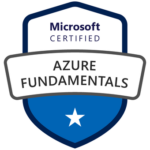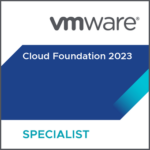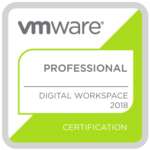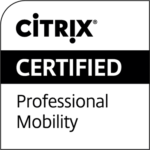
VMware Explore 2023 – Major Announcements
After Las Vegas, I was lucky enough to attend VMware Explore 2023 in Barcelona as well. This article gives you an overview of some of the major announcements. In case you missed the announcements from Las Vegas in August 2023, have a look here: https://www.cloud13.ch/2023/08/22/vmware-explore-2023-us-day-1-announcements/
VMware Sovereign Cloud
Today, VMware announced new innovations and technology partnerships that will help accelerate sovereign digital innovation and enhance security for customers around the world. Today, more than 50 VMware Sovereign Cloud providers in 33 countries are part of a powerful, interconnected, and diverse ecosystem that supports customers’ sovereign cloud requirements. Together, VMware and VMware Sovereign Cloud partners are helping organizations unlock the innovative power of their data while remaining compliant with data privacy regulations.
Details can be found here: https://news.vmware.com/releases/vmware-explore-2023-barcelona-sovereign-cloud
Software-Defined Data Center
Since VMware announced vSphere 8.0 U2 and vSAN 8.0 U2 in Las Vegas, and NSX 4.1.2 in October 2023, we only heard about the future VMware Cloud Foundation 5.1 release in Barcelona.
VMware Cloud Foundation (VCF)
VMware announced VCF 5.1 with the following BOM:

Here is a list with other enhancements:
- VCF Support for vSAN Express Storage Architecture (ESA)
- Networking and Security Enhancements
- vSphere Distributed Services Engine for VCF environments (support for DPUs)
- GPU Enhancements for Performance and Scale (up to 16 GPUs/vGPUs per VM)
- Mixed-mode Support for Workload Domains (run VCF 5.x workload domains of different versions)
- Terraform Provider for VMware Cloud Foundation
- Run VCF 5.x workload domains of different versions (key-based & keyless licensing options for brownfield deployments)

Note: VMware Cloud Foundation 5.1 is now available for perpetual deployments, subscription environments will be supported with VCF 5.1 at a later date.
Ransomware
VMware announced the upcoming launch of VMware Live Recovery, a new solution that provides protection against ransomware as well as disaster recovery across VMware Cloud in one unified console. VMware Live Recovery is designed to help organizations protect their VMware-based applications and data from a wide variety of threats, including ransomware attacks, infrastructure failure, human error, and more. By bringing together the functions of established products VMware Site Recovery Manager and VMware Cloud Disaster Recovery with Ransomware Recovery – and combining them under a unified, flexible, and SaaS-based console – customers can realize comprehensive enterprise protection within a single solution.

VMware Live Recovery provides:
- Secure Cyber Recovery. VMware Live Recovery will enable organizations to recover from ransomware attacks confidently and quickly.
- Unified Protection. VMware Live Recovery will provide a single console to manage ransomware and disaster recovery functionality, simplifying administration across the enterprise.
- Simplified Consumption. VMware Live Recovery will offer flexible licensing across use cases and clouds, making it easy for organizations to get the protection they need.
Modern Applications
Have a look at this blog to understand the enhancements made to Tanzu Hub and Tanzu Intelligence Services: https://tanzu.vmware.com/content/blog/tanzu-hub-integrations-explore-2023
Tanzu Application Platform 1.7
If you are interested in TAP, have a look at this blog: https://tanzu.vmware.com/content/blog/tanzu-application-platform-1-7-release-news
Tanzu Application Service 5.0
Should you be looking for the TAS 5.0 announcement, have a look at this blog: https://tanzu.vmware.com/content/blog/tanzu-application-service-5-release-news
Tanzu Application Catalog
After Tanzu Application Catalog was renamed to VMware Application Catalog in November 2021, it now seems to be called Tanzu Application Catalog again. 😀
I think the same is true for Tanzu Data Services, which was renamed to VMware Data Services, which now seems to be known as Tanzu Data Services.
Tanzu Data Services
VMware announced the next major release for Data Services Manager (DSM) and two new partnerships.
Data Services Manager 2.0 (DSM)
VMware vision is to make data easy to store, manage, and consume on any VMware cloud.
The upcoming release of Data Services Manager will be tightly integrated with VMware Cloud Foundation, with built-in database visibility and resource controls accessible through vSphere UI and APIs. Data Services Manager 2.0 will also support enhanced automation for data services lifecycle management, including non-disruptive patching and upgrades. Finally, it will deliver cloud-native self-service capabilities for application teams through tools of their choice, with support for VMware Aria Automation and Kubernetes. Last but not least, with version 2.0, Data Services Manager will become a platform for managing different data services, based not only on data engines that come from VMware (currently Tanzu SQL), but also engines from 3rd parties.
That is why they announced the initial key partnerships with Google Cloud for AlloyDB Omni and MinIO for Object Storage on VMware Cloud Foundation. All managed by DSM with the same features, workflows, and user experience. This includes deeper integration with vSphere as well as VMware vSAN with data path optimizations and the use of features like snapshots and clones.

Note: Expected GA date is January 2024
Anywhere Workspace
The end-user computing related announcements are summarized in this blog: https://blogs.vmware.com/euc/2023/11/whats-new-in-anywhere-workspace-at-vmware-explore-barcelona-2023.html







 The Future
The Future






































